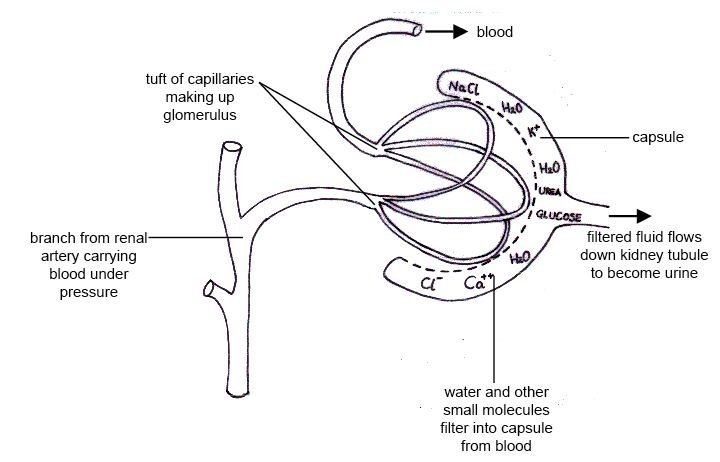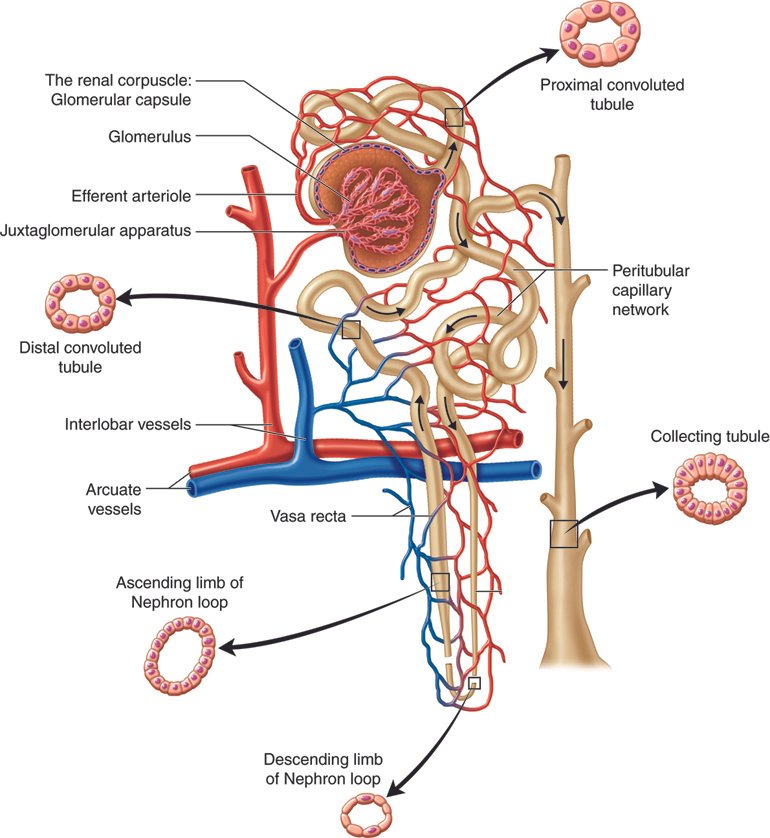Welcome to our mesmerizing blog post where we delve into the captivating world of fluids and urine! In this YouTube video, we will embark on a journey that uncovers the incredible processes behind urine formation and the vital role our kidneys play in filtering blood.
Our kidneys, shaped like organs, are ingenious machines that not only filter blood but also regulate water and electrolyte concentrations within our body fluids. The result of this intricate filtering process is urine, which is excreted outside the body through the urethra, carrying with it waste substances, excess water, and excess electrolytes.
Urine formation involves various stages, including glomerular filtration, tubular reabsorption, and tubular secretion. At the core of this process lies the nephron, which is the functional unit of the kidneys. Starting with the glomerulus, a network of tufted capillaries, the blood is primed for filtration. Surrounding this network is a double-walled capsule called Bowman’s capsule, creating a space known as Bowman’s space.
As the blood make its way through the capillaries, the glomerular filtration membrane comes into play. Consisting of three layers – the valve endothelium, basement membrane, and epithelial podocytes – this membrane allows certain particles to pass through while keeping others at bay. The fluid that filters from the capillary blood into Bowman’s space is known as filtrate and forms the primary urine.
So join us on this enthralling adventure as we unravel the intricacies of the mesmerizing journey from fluids to urine. Prepare to be captivated by the remarkable processes happening within our kidneys and gain a newfound appreciation for this mundane yet extraordinary bodily function. Let us embark on this urine exploration together and be prepared to be amazed!
1. The Intricate Process of Glomerular Filtration: Unveiling the Secrets of Kidney Functioning
The intricate process of glomerular filtration is a vital component of kidney functioning, serving to filter the blood and eliminate waste substances while regulating water and electrolyte concentrations within the body fluids. This complex process ultimately results in the formation of urine, which is excreted from the body through the urethra and contains waste materials, excess water, and excess electrolytes.
Urine formation involves several key steps, including glomerular filtration, tubular reabsorption, and tubular secretion. At the beginning of the nephron, the functional unit of the kidney, the glomerulus plays a crucial role in filtering the blood. This network tuft of capillaries is enclosed within thin double-walled capsules called Bowman’s capsules. The space inside the capsule and around the glomerulus is known as Bowman’s space.
- The glomerular filtration membrane, consisting of three layers of capillary, including the valve endothelium, basement membrane, and epithelial podocytes, allows certain particles of blood to pass through while retaining others.
- The fluid that is filtered from the capillary blood into Bowman’s space is referred to as the filtrate and forms the primary urine.
This intricate process of glomerular filtration provides a deeper insight into the fascinating functioning of the kidneys and how they maintain proper fluid and electrolyte balance in the body.

2. Decoding the Nephron: From Blood Filtration to Urine Formation
The kidneys serve as shaped organs dedicated to the vital task of filtering blood, eliminating waste substances, and maintaining proper water and electrolyte concentrations in the body fluids. This intricate process results in the production of urine, which is ultimately expelled from the body through the urethra.
Urine formation involves several key stages, including glomerular filtration, tubular reabsorption, and tubular secretion. At the core of this process lies the nephron, the functional unit of the kidneys. The nephron begins with the glomerulus, a network tuft of capillaries responsible for the initial filtration of blood. Encircling the glomerulus are thin, double-walled capsules known as Bowman’s capsules. The space both within and surrounding these capsules is referred to as Bowman’s space.
As blood passes through the capillaries of the glomerulus, glomerular filtration causes a significant amount of plasma contents to spill into Bowman’s space through the glomerular filtration membrane. This membrane comprises three layers: the valve endothelium, basement membrane, and epithelial podocytes. While allowing certain particles to pass through, the membrane prevents the passage of all fluid. The fluid that does filter from the capillary blood into Bowman’s space is known as filtrate and ultimately forms the primary urine.
3. Unlocking the Mysteries of Bowman’s Capsule: The Gateway to Urine Production
The glomerular filtration in the kidneys is a remarkable process that plays a crucial role in the production of urine. This process filters the blood, removing waste substances, and regulating water and electrolyte concentrations in the body fluids. The end product of this intricate process is urine, which is excreted from the body through the urethra, carrying with it wastes, excess water, and excess electrolytes.
Urine formation involves three main steps: glomerular filtration, tubular reabsorption, and tubular secretion. At the start of the nephron, the functional unit of the kidneys, lies the glomerulus, which is a network of capillaries responsible for the first step of filtering the blood. Surrounding the glomerulus is a thin, double-walled structure known as Bowman’s capsule. The space inside the capsule, referred to as Bowman’s space, serves as a collection area for the filtrate that is produced during glomerular filtration. As the blood passes through the glomerular capillaries, a significant amount of plasma contents spill out into Bowman’s space through the glomerular filtration membrane. This membrane consists of three layers: the valve endothelium, the basement membrane, and the epithelial podocytes. While this membrane allows some particles of blood to pass through, it restricts the flow of certain fluids. The fluid that is filtrated from the capillary blood into Bowman’s space is called filtrate and forms the primary urine.

4. The Dance of the Glomerular Filtration Membrane: Selective Filtration for Optimal Urine Composition
The glomerular filtration membrane, also known as the blood filtering dance, is a intricate process that ensures optimal urine composition. This selective filtration occurs within the kidneys, where they remove waste substances from the blood and maintain the balance of water and electrolytes in the body fluids. The end result of this dance is the production of urine, which is excreted through the urethra, consisting of waste products, excess water, and electrolytes.
Urine formation involves three key steps: glomerular filtration, tubular reabsorption, and tubular secretion. At the beginning of this dance, the nephron, which is the functional unit of the kidneys, starts with the glomerulus. The glomerulus is a network of capillaries, resembling a tuft, that kickstarts the filtering process. Encasing the glomerulus, we have the thin double-walled capsules called Bowman’s capsules. Bowman’s space refers to the space inside the capsule and surrounding the glomerulus.
During glomerular filtration, as the blood journeys through the glomerulus’s capillaries, a remarkable event occurs. The filtration process causes a plethora of plasma contents to spill out into Bowman’s space through the glomerular filtration membrane. This essential membrane comprises three layers: the valve endothelium, basement membrane, and epithelial podocytes. While this membrane allows specific particles of blood to pass through, it carefully restricts the flow of others. The fluid that is filtered from the capillary blood into Bowman’s space is referred to as the filtrate, forming the primary urine. This intricate dance ensures that only the necessary components are filtered while preserving vital elements for the body’s optimal function.
To Conclude
In conclusion, the journey from fluids to urine is truly a mesmerizing one. Our kidneys play a crucial role in filtering the blood and removing waste substances while also maintaining the balance of water and electrolytes in our body fluids. The end result of this intricate process is urine, which is excreted from our bodies through the urethra.
The formation of urine involves several important steps, including glomerular filtration, tubular reabsorption, and tubular secretion. The nephron, the functional unit of the kidneys, starts with the glomerulus, a network of capillaries that acts as the initial filter for the blood. This filtration process takes place within Bowman’s capsule, a thin double-walled structure that surrounds the glomerulus.
As the blood travels through the capillaries of the glomerulus, various plasma contents are filtered out into the space within Bowman’s capsule, known as Bowman’s space. This filtration occurs through the glomerular filtration membrane, composed of three layers: the valve endothelium, basement membrane, and epithelial podocytes. While this membrane allows some particles of blood to pass through, it selectively retains others.
The fluid that is filtered from the capillary blood into Bowman’s space is called filtrate and forms the primary urine. This filtrate goes through further processes of reabsorption and secretion in the tubules of the nephron, ultimately leading to the formation of the final urine that is excreted from our bodies.
The intricacies of urine formation and the role played by our kidneys in maintaining our body’s balance are truly fascinating. Understanding this process helps us appreciate the importance of kidney health and the impact it has on our overall well-being. So next time you visit the restroom, take a moment to marvel at the complex journey that transforms fluids into urine, a testament to the remarkable workings of our bodies.